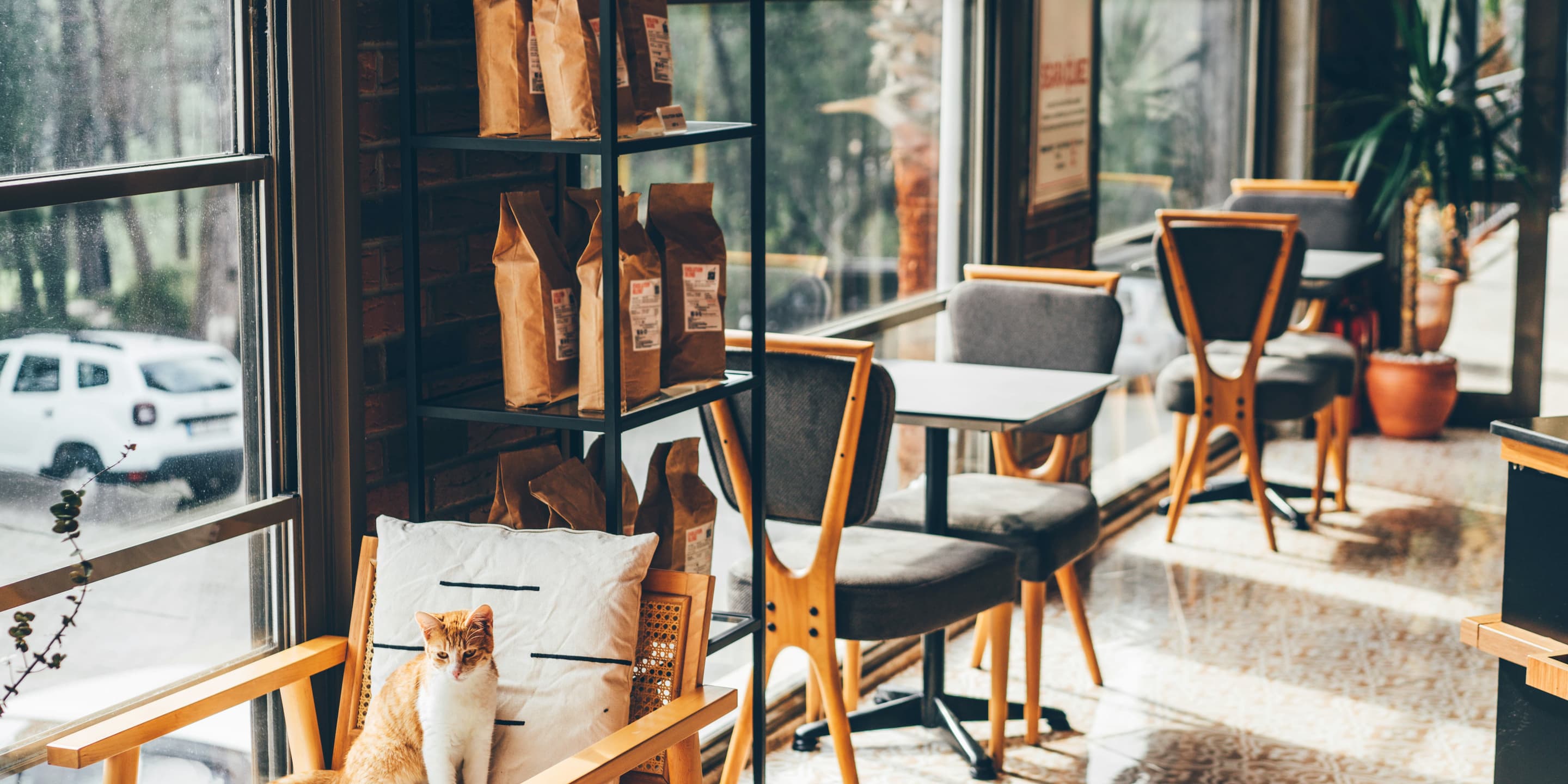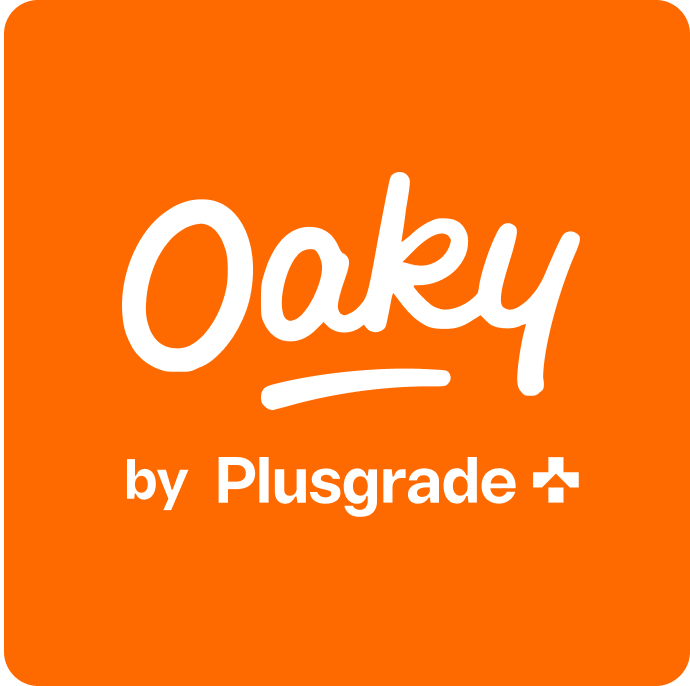How to improve hotel sales: 17 ideas to add to your strategy
Oaky
•

In the hospitality industry, delivering exceptional service is foundational to driving repeat bookings. Though, how do you attract guests in the first place? Are word-of-mouth recommendations enough to sustain and increase hotel sales?
To increase hotel revenue, you continuously need to refine the sales process. You can never sit back and think you’ve reached maximum performance.
Whether it’s by adding new tools or tactics, it calls for a comprehensive approach and active involvement. Here are over a dozen ideas to include in your hotel sales strategy and tips on how to track its success.
What are hotel sales and why are they important?
Contrary to the usual hotel sales definition that limits it to hotel rooms and food and beverage (F&B) deals, hotel sales also include the selling of experiences and stays.
It’s one of the most important numbers to track. The main reason is that more hotel sales mean higher hotel revenue.
Higher hotel sales also mean that you can improve your services and offerings. This way, more guests can enjoy upgraded experiences, especially when you see an uplift in service and add-on sales.
Plus, who likes to dine in an empty restaurant? The same applies to hotel stays.
A good occupancy rate creates a vibrant atmosphere. It shows guests that they’re indeed staying at a popular hotel.
What are the top hotel sales strategies?
While selling hotel rooms should be your priority, you should also look at how you can incorporate upgrades and packages. Hence, it’s best to take a balanced approach.
Here are 17 strategies that your sales team can implement to grow revenue, while also contributing to the guest experience.
1. Integrate upselling into your revenue strategy
Upselling is an essential strategy, yet many hotels overlook it. Put simply, upselling in hotels refers to actions that encourage hotel guests to buy the more expensive option within a category.
It often also includes cross-selling. Using cross-selling, you can try to persuade guests to buy other extra services like a spa service on top of their initial reservation.
What makes hotel upselling/cross-selling so crucial is that it empowers hotels to maximise revenue by fully using room upgrades and services. Aside from contributing to hotel revenue and driving more hotel sales, it also positively impacts the guest experience.
Upselling helps hotels showcase more unique experiences, which is vital to stay ahead of the curve. In fact, the 2024 Leisure Consumer Trends Report published in partnership with the International Association of Amusement Parks and Attractions (IAAPA) found that 67% of millennial travellers will pay for never-before-seen options.
Unique food and beverage options, in particular, are sought after across all age groups. The same report found that nearly 90% of visitors will pay a premium for food and beverage options that will add value to their experience.
Oaky’s own data backs it up. According to our report, a 5-star hotel can generate €29 per room per month on average (with the max result reaching €141 per room per month) in upsell revenue by selling room upgrades and deals before arrival.
2. Identify ancillary revenue opportunities at your hotel
As mentioned earlier, hotel sales can also include ancillary revenue opportunities. As such, hotels should look beyond hotel rooms. Consider your entire inventory to identify opportunities for generating ancillary revenue.
To help a hotel business uncover these ancillary revenue opportunities, you should take into account all the stages of the guest journey. For example, during pre-arrival and upon arrival, you can offer room upgrades or transportation services. Then, during their stay, you can offer a wide range of in-room services and amenities like spa treatments and food and beverage deals, while late check-out is a winner right before departure.
3. Use hotel upsell software to amplify room upgrade and service sales
In order to implement upselling and leverage identified ancillary revenue opportunities, you’ll need a robust, upsell software solution. Manual upselling is hard to manage.
Plus, it tends to be limited only to upselling at check-in (no pre-arrival and in-stay upselling). This makes it impossible to scale.
Many hotels struggle with communicating room upgrades, additional services and deals they have on offer to guests. For example, before adding hotel upsell software to their tech stack, PMG Hotels & Resorts couldn’t communicate ancillary revenue opportunities during the pre-arrival stage of the guest journey. Yet, it had a wide range of pre-arrival deals to offer.
After adopting Oaky, it can send out pre-arrival emails giving access to services and add-ons like airport pickup, breakfast and upcoming events. In fact, airport pickup and breakfast are now two of its top-selling offers and Bali Niksoma (part of PMG Hotels & Resorts group) constantly sees an ROI of 8.45 with Oaky’s hotel upsell automation.
Automate upselling and boost hotel sales with Oaky
4. Use segmentation to refine the personalisation of your offerings
As a prominent marketing guru Seth Godin says, “If you're selling to everyone, you're selling to no one." Across all industries, it’s essential that you know your target audience.
In the hotel industry, you need to know your target guests’ primary reason for travelling and which amenities and services they need during their hotel stay. Using this knowledge, you can divide guests into guest segments that share similar traits and create tailored guest experiences to meet these needs.
Going forward, you can now focus your messaging. Your communication should offer deals that a particular guest segment will find more appealing to boost conversion rate and increase hotel sales. This level of personalisation shows guests that you care and they can look forward to exceptional customer service.
For example, if your potential guests include business travellers, you can focus on laundry services, airport pickup, and conference facilities. On the other hand, if your guest segment includes families with young kids, showcase babysitting services, family-friendly activities, and local events that young and old can enjoy together.
Here, automation software is also the best way to go about segmentation. For example, an upsell software like Oaky can be used for upselling as well as segmentation.
5. Harness the power of dynamic pricing
Implementing dynamic pricing can also drive sales. If hotel rates are customised to the market demand, guests can book rooms at optimal rates throughout the year.
For example, during low season, you can benefit from discounted rates to fill empty rooms and drive occupancy. In combination with upselling, you can upsell higher room types to those guests who are willing to pay more, allowing standard room types to be resold to other bookers.
It’s adopted widely by other industries too. Guests understand that pricing is based on data and not emotion. That said, if you’re concerned that price-sensitive guests might be put off, you can offer packages to increase the perceived value.
6. Destination marketing sales strategy
Using this approach, you’ll partner with local businesses and other tourism bodies in your area and work together to market your destination. Instead of only focusing on the amenities and services your hotel has to offer, you’ll highlight the region’s offering to attract more travellers.
Basically, you want to sell the experience that they can expect. For example, on social media, you can share high-quality photos of local attractions, encouraging guests to plan an escape to your city and book a stay at your hotel.
7. Work on your hotel positioning
The essence of working on your hotel positioning lies in crafting a distinct identity that resonates with your target audience. It involves identifying your unique value proposition and communicating it effectively to differentiate your hotel from competitors. By aligning your positioning with customer needs and preferences, you can attract the right guests, foster loyalty, and drive revenue growth.
Start by analysing your current brand identity. Does the way your messaging positions your hotel match the expectations of potential guests?
Another key step is to study the market. What are the current industry trends? What do competitors offer to match those trends and meet guest needs?
You’re looking to devise a hotel positioning that aligns with trends and needs, yet sets yourself apart from others. Your marketing material, as well as hotel staff, should reflect this hotel positioning too.
8. Team up with local businesses
Not only can local businesses help you with destination marketing, but also your hotel marketing in general. You can, for example, start an affiliate marketing programme that will reward local businesses, like tour guides and travel agencies, with a commission fee in exchange for a recommendation that leads to a booking.
In addition to tour operators, you can also partner with businesses like restaurants and local attractions and extend your reach to their customer base. In this case, instead of starting an affiliate marketing programme, you can create a package that allows guests to experience both your hotel and local establishments.
Ideally, you should partner with local businesses that offer services excluded in your hotel offering. For example, if your in-house restaurant doesn't have freshly baked pastries, you can partner with a local café known for these types of sweet treats.

9. Generate more direct bookings
Building a direct booking strategy is beneficial in many respects:
It’s more cost-effective, as you don’t need to pay costly commissions to online travel agencies (OTAs).
In addition to having more control over your pricing, you’re also in control of your hotel positioning and branding.
Direct bookings allow hotels to collect valuable guest data. This data can be used to create guest segments and refine marketing strategies, optimise revenue management, engage with guests post-departure and convert them into loyal ones.
To kick off with this strategy, you should offer travellers a simple and easy booking process. Your hotel will need a reliable, feature-rich online booking engine that seamlessly integrates with the hotel website and property management system (PMS).
Then, to encourage guests to book directly, offer incentives (also, on social media!). Ways that you can use to incentivise direct bookings include offering a complimentary parking bay or bicycle rental or adding a discount for other on-site facilities. The latter can work especially well as it also lets you boost room revenue — a double win.
10. Improve your hotel website
In order to drive more direct sales, you’ll need to ensure your hotel website delivers an intuitive user experience (UX). If more direct hotel sales aren’t reason enough to upgrade your website, consider that it will also improve brand awareness and build brand affinity.
All pages, even more so the checkout page, should load quickly. Straightforward navigation is equally essential. Including clear calls to action can do wonders for navigation.
While you’re at it, also optimise your pages for search engines and mobile devices. The latter is especially important considering that nearly half of travellers surveyed by Statista Research Department used their mobile devices to research destinations. What’s more, Affilired found that almost a third of hotel bookings were made by means of a mobile device in 2023’s first quarter.
11. Enhance hotel group bookings
Group bookings are lucrative to hotels as they can drive repeat business. To implement this strategy, you need to assign a dedicated group sales team or individual responsible for prospecting, nurturing, and closing group bookings. This team should create tailored group packages catering to groups as well as special amenities.
For example, if you have state-of-the-art meeting spaces, you can use this special amenity to target corporate groups. You can also reach out to planners and travel agents directly and share personalised offers targeting specific groups like pensioners, sports teams, etc.
12. Establish your presence on OTAs
Make no mistake, building a direct booking channel is important, but the reality is that the majority of bookings still take place on OTAs. Booking.com, in particular, is extremely popular and is the most visited travel and tourism website across the world by far.
In April 2024 alone, Booking.com boasted nearly 560 million visits. To put its popularity into better perspective, TripAdvisor, which was in second spot, attracted merely about 176 million visits.
While OTAs attract hundreds of millions of monthly visitors, the competition is fierce, and you’ll need to think of ways to help your hotel stand out. You can start by ensuring your profile and rates are optimised.
To optimise your profile on the different OTAs:
Double-check that it’s complete, accurate, and visually appealing
Use high-quality photos, compelling descriptions, and detailed amenities to showcase the unique selling points of your property
Regularly monitor and update room rates, availability, and inventory allocation across OTAs to ensure consistency (rate parity) and boost your search ranking.
Dynamic pricing strategies will also come in handy. You’ll be able to adjust rates based on demand, seasonality, and competitor pricing, ensuring that you maximise your potential revenue.
Monitoring key performance metrics like booking volume, conversion rates, revenue generated, and OTA ranking will help you to evaluate the effectiveness of your strategies. You can also use this data to identify areas for improvement and optimise your OTA presence further accordingly.
It calls for continuous work, but developing a relationship with OTA account managers will make it easier to stay informed about new features that can streamline these tasks. Plus, they’ll also keep you up to speed about promotional opportunities and industry trends.
13. Develop a robust guest loyalty programme
Having a guest loyalty programme in place can help to attract hotel sales among millennial and Gen Z travellers in particular. In fact, EMARKETER reports that according to a Morning Consult survey, almost half of millennials belong to a travel loyalty/rewards programme, with 42% of Gen Z also taking advantage of this type of offering.
When creating a hotel loyalty programme, ensure to take a flexible approach. From points to simple discounts to exclusive tiers, you have a few types of formats. Plus, aside from rewarding guests only for booking frequent stays, consider rewarding them for taking advantage of other deals like hotel room upgrades or recommending your hotel to their network.
Use the preferences of your target market to decide how to structure it. For example, if you’re mainly targeting price-sensitive guests, stick to a simple discount program that offers immediate gratification.
14. Launch a cross-promotional sales strategy
Part of your marketing team’s responsibilities is to follow events scheduled to take place in the area. Armed with this information, they can then plan their own specials around these local events.
For example, if there’s a final soccer match scheduled for a Saturday, you can offer a range of specials leading up to that week. Depending on the event, it can also be used as an opportunity to focus on group bookings.
15. Create package deals
Instead of offering discounts during slower seasons, consider offering package deals. A discounted room rate will help to boost hotel room sales and occupancy rate but a more comprehensive package will increase guest spending.
Plus, guests view it as more attractive and better value for money.
You can, for example, create a wellness package. In addition to the hotel room, you can throw in free spa services or daily yoga sessions on the beach during sunrise.
16. Collaborate with influencers
Influencer Marketing Hub’s The State of Influencer Marketing 2024: Benchmark Report reveals that nearly 85% of the thousands of marketers and brands they interviewed view influencer marketing as effective.
One of the main reasons for this is that people are more likely to support a brand if an influencer they know and trust posts about it. In fact, Traackr’s 2024 UK Impact Report found that 63% of consumers feel that influencers’ content had some impact on their purchase decisions.

As trust is crucial to the success of this hotel marketing strategy, pay special attention to influencer selection. You’ll need to work with a travel influencer who regularly posts content that aligns with your hotel positioning while resonating with target guests. For example, if they typically share wellness advice but you’re mainly targeting business travellers, you won’t enjoy an impressive engagement rate.
17. Drive word-of-mouth marketing with online reviews
Online hotel reviews carry more weight than star ratings. More than half 54% of European consumers identified online customer reviews as the main factor influencing their decision to book online accommodation. Only two out of every 10 travellers disagreed that it was a determining factor.
It’s clear — hotels should actively try to get more positive online reviews.
To do this, it’s essential that they take the extra step to encourage past guests to leave a review. Then, once they do, ensure that you respond.
It shows your dedication to the guest experience and appreciation for their support. In the case of a negative review, it also gives you the opportunity to deal with any problems that might have arisen during their stay.
How to measure your hotel sales success [Essential KPIs]
While the goal is to increase hotel room sales, tracking the following key metrics will also give you insight into the effectiveness of your hotel room sales strategies.
TRevPAR
Unlike revenue per available room (RevPAR), total revenue per available room (TRevPAR)
measures the entire scope of sales. RevPAR only considers the revenue generated via hotel room sales.
On the other hand, TRevPAR keeps in mind other revenue sources. These can include spa services, conference facilities, recreational activities, etc.
By bringing these secondary revenue sources into the equation, you’re getting a more comprehensive picture.
What Oaky’s customers also show is that elevating revenue can be much easier by embracing the entire revenue management, not only rooms. According to our latest report, in Europe, service conversion rates outperform upgrade conversions.
ADR
If you charge different room rates, tracking your average daily rate (ADR) will give you insight into how much revenue each room generates. It’s useful for comparing your pricing to competitors and uncovering seasonal trends.
Pricing is foundational to increasing hotel room sales. You need to know if your average daily rate is in line with what similar hotels offer.
If it’s too high, it could be the reason for empty rooms. If it’s much lower than the benchmark, you’re not reaching your true revenue potential. You need to reach that sweet spot, and the only way to do that is to keep your pulse on the average daily rates.
Revenue (per market segment)
Running a successful hotel business also calls for analysing revenue generated from different market segments such as leisure travellers, business travellers, group bookings, and corporate accounts.
Assess the contribution of each segment to your overall revenue. Then, tailor sales tactics and marketing strategies accordingly.
For example, if leisure travellers are driving the bulk of your revenue, you can adjust your strategy to zoom in on this group. On the other hand, if you have a number of facilities ideal for business travellers and you're centrally located to the business district, it could be that you’re not communicating these benefits effectively. In this case, it could simply mean a few changes to your hotel positioning and communication instead of giving up on targeting this segment altogether.
Return on investment (ROI)
Calculate the ROI of sales and marketing initiatives, promotions, and campaigns to assess their effectiveness in driving revenue and profitability. Compare the cost of acquisition to the revenue generated to determine the ROI of specific sales strategies and investments.
For example, if your loyalty programme is almost costing you more, it could be time to rethink your discount. Whichever marketing strategy you implement, it should remain profitable.
Final thoughts
When deciding which strategies to implement, let your target audience and location guide you. For example, if your hotel isn’t located in a destination city but rather en route to one, destination marketing will generate unimpressive results.
You have little control over your location, but you get to decide who you want to target. Plus, when you break down the revenue per guest segment, and you find that you’re possibly targeting the wrong group, you can change course. Whether that’s to focus on a new guest segment, tweak your hotel positioning, or showcase other facilities and services, there are more ways than one that you can boost revenue.



